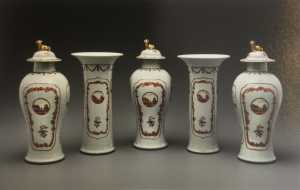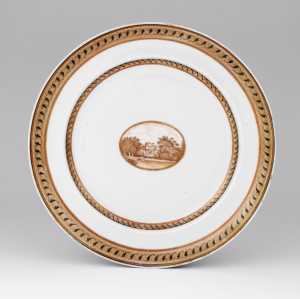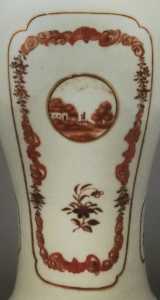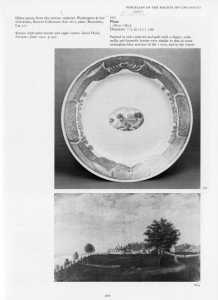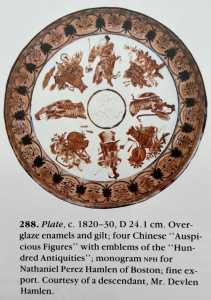The Chinese and Asian Art Forum. For Fans, Collectors and Dealers.
 Basic Rules For the BidAmount Asian Art Forum: Talk about whatever you want. You can even discuss and offer things that are for sale if they are authentic. Maximum image file size per post is 2 MB. Images of 700pxl x 700pxl are optimal if saved at a medium resolution. Be respectful of others and enjoy yourself. Click the YouTube link for a brief tutorial on using the forum. You can also EMBED Videos by cutting and pasting from You-Tube, Vimeo etc.
Basic Rules For the BidAmount Asian Art Forum: Talk about whatever you want. You can even discuss and offer things that are for sale if they are authentic. Maximum image file size per post is 2 MB. Images of 700pxl x 700pxl are optimal if saved at a medium resolution. Be respectful of others and enjoy yourself. Click the YouTube link for a brief tutorial on using the forum. You can also EMBED Videos by cutting and pasting from You-Tube, Vimeo etc.
NOTE: To post an item or add a new post, click open the category title from the FORUM LIST, and CLICK the Blue ADD TOPIC button.
All,
This is my research topic that was required as part of my volunteer efforts at Bayou Bend, the American decorative arts wing of the MFA, Houston. Since the collection has significant Chinese Export ware, my topic (chosen by the curator) was in this area. I figure it might be of some interest to the forum. Unfortunately, the footnotes got stripped out in the transfer.
Hidden in Plain Sight; Chinese Symbolism in a Neoclassical Design
Introduction
In the West, garnitures can be defined as a set of decorative objects with a common theme that tend to come in odd numbered sets of three, five, and rarely seven. In the East, a similar concept is found with Chinese altar sets that typically consist of a central incense burner, two beaker vases, and two candlesticks. In both the East and the West, these sets of objects can be made with a variety of materials such as stone, metal, or porcelain.
The origin of the word garniture is most likely derived from a 17th century French term “garniture de cheminee” which refers to the decorative arrangement of ceramic vases or urns above a chimneypiece. As a definition the concept can be further simplified to the phase “to garnish” or decorate.
Garnitures remained popular for centuries in Europe and colonial Americans that kept abreast of the latest fashion trends from overseas soon added garniture sets to their household decorations. American merchants trading directly with the Chinese shortly after the founding of our new nation imported ceramic export wares including garniture sets that were popular with stylish Americans.
In 1969, Miss Ima Hogg gifted the Bayou Bend Collection a five piece porcelain Chinese Export Garniture Set that she had purchased earlier from antique dealer David Stockwell in Delaware. This research paper is a closer examination of this particular Garniture Set in relation to the American market for Chinese goods and how the Chinese specifically targeted the design & decoration of these goods to American tastes. This paper will also include an explanation of the somewhat hidden Chinese symbolism to be found in the border decoration on each of the five garniture vases. See illustration 1.
Chinese Export Ware for Americans
The Bayou Bend Garniture Set was most likely imported directly into the new Federal Republic sometime between 1790 and 1805 by American merchants trading with China in Canton. American merchants arrived in China during the 1780s and found that foreigners could only enter one designated port (Canton) and they would be governed under strict Chinese regulations and restrictions previously established for dealing with “Western barbarians”. Coming from a newly established nation with little to no worldwide powers to influence or compel other foreign nations, the isolated American traders in Canton saw good economic reasons for obedience to Imperial laws. Chinese officials and Chinese merchants began to look with favor on the Americans and the new comers achieved increasing success over the years with their trading endeavors.
The great majority of export ware coming into Canton from Chinese merchants trading with Westerners was mass produced blue and white table ware from the Jingdezhen porcelain center in Jiangxi province. The opportunity for Westerners, including the Americans to direct or influence decoration of export wares was mainly with those items (along with custom orders) receiving overglaze enameling which was typically done in Canton. The majority of Neoclassical design elements used by the Chinese craftsman that were so popular with early 19th Americans are usually in overglaze enamel colors. I am sure that American merchants made it clear to their Chinese counterparts that the eagle was held in great regard by the residents of the young Republic. Other scenes of American interest show up on export ware including Mount Vernon and Monticello. See Illustration 2. Portraits of patriotic figures such as George Washington also found their way onto export ware for the American market.
Bayou Bend Garniture Design
An examination of the decoration on the Bayou Bend Garniture Set shows the typical Neoclassical design elements popular with the American market in the Federal period. There are floral swags and borders, shaped cartouches, western based landscape medallions, and other small floral motifs can be found on the five vases. The M. and M. Karolik Collection at the Boston MFA has a partial Garniture Set in its collection with very similar design elements.
The landscape medallion on the Bayou Bend set seems to be a fairly generic Western scene of a man walking across a bridge over a body of water towards a house with some trees in the foreground and background. I cannot determine if the scene can be specifically tied to America or Europe.
The colors used in Bayou Bend Garniture are also fairly typical for examples of Chinese imports to Federal America. The main enamel color used on the vase set is a sepia brown shade that against the white porcelain body gives the effect of a drawing on paper. There are also highlights using a darker brown enamel and gilt gold accents on the vase bodies along with gilt on the dog finals on the vase lids. There is finally an orange-red enamel used on some non-western designs incorporated into the floral borders found on the front and back of each vase.
Up to this point the Chinese craftsman has incorporated just about every Neoclassical design element required and expected by a fashionable early 19th century American consumer of imported porcelain wares. Hidden in plain sight in the floral borders are four bats among stylized clouds that are very much in the Chinese taste. See Illustration 3.
Meaning of Chinese Bat Symbolism vs. Western Bat Mythology
The Chinese for centuries have associated bats with many virtues and good wishes so Chinese art abounds with bat motifs on fabrics, jewelry, paintings, and porcelain. These bats are often bright red which to the Chinese is the color of joy. Five bats have a very auspicious meaning that is known as the Five Blessings—health, prosperity, love of virtue, long life, and a natural, tranquil death. While the western motifs that the Chinese artisan used on the Bayou Bend Garniture most likely had little or no meaning to him, the cloud & bat motif was a clear message known to any educated Chinese person. Their subtle message to an unknown customer across the sea was “May your longevity and happiness be as great as heaven is high.”
Another aspect of the Chinese symbolism on these five vases that has puzzled me during my research was why there are only four bats instead of five (Five Blessings) shown on each cartouche. Numbers have traditionally been important in Chinese symbolism and four associated with death is the most unlucky number in China. As an engineer, I love playing with numbers so I am advancing the following theory about these bats. If one considers the number of bats on the entire set of five vases, then the total count is 40 bats. If these bats are grouped into sets of 5, then there are 8 sets of these grouped bats. Would the reader care to guess what is considered the luckiest number in China? Of course, the answer is eight which is traditionally associated with wealth.
I believe most early 19th century American customers would have been rather horrified to find bats on their fashionable Neoclassical garniture set. Traditionally, the West has associated bats with the night, the devil, and also witchcraft. Many religious texts such as the Talmud have presented bats in a negative manner. The bats and clouds on the Bayou Bend Garniture Set are so well integrated into the floral borders that I don’t think the original owners would have recognized them.
The Use of Western Print Sources in Chinese Export Porcelain
Within the categories of Chinese export porcelain goods available to Western merchants in Canton was a more custom, on-demand type of porcelain called “Chine de commande”. This type of porcelain included armorial dinner & tea services, cups and mugs with handles, and also garniture sets. As early as the 1680s, European merchants supplied the Chinese with European prints to copy various subjects onto porcelain such as religious scenes, classical mythology, landscapes, portraits, etc. There was even a painting style that was developed by the Chinese to imitate the effect of printed lines on paper called “encre de Chine”. With the arrival of Americans in Canton, they soon made use of the “Chine de commande” system to start customizing Chinese export porcelain for the American market. A notable example in the Bayou Bend collection that relates to this system of custom enameled porcelain is the sauceboat stand from the Washington Cincinnati service.
I have not found very much information in regard to print sources for specific American landscapes that are typically identified by recognizable buildings. Jean M. Mudge in Chinese Export Porcelain in North America states “keyhole like vignettes of local landscapes, more often taken from prints in contemporary periodicals than sketched by those who ordered them.” The Houston MFA has a Chinese Export Punch Bowl in its collection with several scenes in enamel sepia that have been traced back to a Philadelphia periodical called The Port Folio.
Howard & Ayers in China for the West notes that an oil painting of the Washington residence along with a small contemporary watercolor copy in the collection of Mount Vernon Ladies Association could be the source for an oval scene in sepia of the house that is found on a Chinese export plate c. 1802-1805. The authors speculate that another watercolor copy of the painting could have been taken to China as part of a custom order. See Illustration 4.
Conclusion
I have spent several months looking for similar examples of Chinese export ware in the early 19th century Neoclassical taste that also incorporate specific Chinese symbolism. I have also reached out to others with an interest in this field for their input regarding similar examples. In conclusion, I believe the Bayou Bend Garniture Set is a rare thing in regard to its unique decoration. The only other item that I found that came close was a Chinese export plate, c. 1820-30, with a French Empire type of border and a central sepia decoration of “auspicious figures & hundred antiques”. It was originally made for Nathaniel Perez Hamlen of Boston. See Illustration 5. After the early 19th century Neoclassical style went out of fashion in America, tastes mostly shifted to export wares wholly in the Chinese stylistic taste.
I would like to thank my fellow collector, John Guerrero whose sharp eye first saw those little, red bats. His enthusiastic support sent me off in several productive directions.
Bibliography
“Chinese Garniture Set”. The Museum of Fine Arts, Houston. accessed March 16, 2022.
https://emuseum.mfah.org/groups/bayou-bend-dining-room/results/images?page=4 .
“Chinese Numerology”. Wikipedia.org. August 5, 2020. https://en.m.wikipedia.org/wiki/
Chinese_numerology.
Ferguson, Patricia. “Vase madness: the craze for garnitures”. National Trust. accessed
August 15, 2022. https://www.nationaltrust.org.uk/features/vase-madness-the-craze-for-
garnitures.
Eberhard, Wolfram, A Dictionary of Chinese Symbols. trans. C. L. Campbell.
London: Routledge & Kegan Paul, Ltd., 1986.
Giehler, Thorsten. “The Ceramics of Eurasia, How export porcelain has shaped a globalized
world”. IMI Research Report No. 1992 [EN]. accessed August 16, 2022.
https://online.flipbuilder.com/mpdm/huzl/.
Gratia, Pater. “Chine de command, Western Subjects 1680-1800”. patergratiaorientalart.com.
accessed August 21, 2022. https://www.patergratiaorientalart.com/home/2448 .
Howard, David & John Ayers. China for the West. London: Sotheby Parke Bernet, 1978.
Kelly, Luke. “Chinese Imperial Vase with Bats and Clouds”. Utah Museum of Fine Arts Blog
Archive 2009-2017. May 22, 2014. https://umfablog.wordpress.com/2014/05/22/collection-
highlightthrowback-thursday-timeline-edition/.
Kuebel, Mary. “Merchants and Mandarins: The Genesis of American Relations with China”.
Doctoral Dissertation, University of Virginia, 1974.
Mudge, Jean. Chinese Export Porcelain in North America. New York: Clarkson N. Potter, 1986.
Nilsson, Jan-Erik. “Chinese Export Porcelain for the West, A short introduction”.
Gotheborg.com. accessed August 20, 2022. https://www.gotheborg.com/qa/
exportforthewest.shtml.
Sargent, William. Treasury of Chinese Export Ceramics from the Peabody Essex Museum.
New Haven: Yale University Press, 2012.
“Talmud Bav’li, Baba Kama 16a”. Halakhah.com. accessed August 22, 2022.
https://www.halakhah.com/pdf/nezikin/Baba_Kama.pdf.
“Unknown Chinese Punch Bowl”. The Museum of Fine Arts, Houston. accessed August 23,
2022. https://emuseum.mfah.org/objects/140654/punch-bowl?ctx=
3111d10326101f61c6ef59c46f6f0978207f2d6a&idx=13
“Unknown Chinese, Stand for a Sauceboat owned by George Washington”. The Museum of
Fine Arts, Houston. accessed August 24, 2022. https://emuseum.mfah.org/objects/40319/
stand-for-a-sauceboat-owned-by-george-washington?ctx=
d226cb9987f05ba0359ed38bc405b3d8c3a8702c&idx=44
“Vase (Part of a set of four)”. Boston Museum of Fine Arts. accessed April 11, 2022.
https://collections.mfa.org/objects/55668/vase?ctx=c8807f75-a311-4cef-8bc0-
e21944049671&idx=69.
Thank you for sharing your work, William. I enjoyed reading it very much. The research must have been interesting. Will you be doing some more?
Interesting, thank you.
Thanks for visiting "The BidAmount Asian Art Forum | Chinese Art"
If you sell on eBay, or have a shop feel free to post images and descriptions and links.
Check back often for discussion about the latest news in the Chinese art and antique world. Also find out about the latest Asian art auctions at Sotheby's, Christie's, Bonhams and Tajans.
Auction results for: fine porcelain, ceramics, bronze, jade, textiles and scholar's objects. As well as Japanese, Thai, Vietnamese and other Asian cultures.
Thank you,
Peter Combs
Topics and categories on The BidAmount Asian Art Forum | Chinese Art
Kangxi vases, Kangxi dishes and chargers, Kangxi ritual pieces, Kangxi scholar's objects, Qianlong famille rose, Qianlong enamels, Qianlong period paintings, Qianlong Emporer's court, Fine porcelain of the Yongzheng period. Chinese imperial art, Ming porcelain including Jiajing, Wanli, Xuande, Chenghua as well as Ming jades and bronzes.
The BidAmount Asian Art Forum | Chinese Art
A free Asian art discussion board and Asian art message board for dealers and collectors of art and antiques from China, Japan, Korea, Thailand, Cambodia, Vietnam and the rest of Asia. Linked to all of the BidAmount Asian art reference areas, with videos from plcombs Asian Art and Bidamount on YouTube. Sign up also for the weekly BidAmount newsletter and catalogs of active eBay listing of Chinese porcelain, bronze, jades, robes, and paintings.
The art of calligraphy - and for the ancient Chinese it certainly was an art - aimed to demonstrate superior control and skill using brush and ink. Calligraphy established itself as one of the major Chinese art forms during the Han dynasty (206 BCE - 220 CE), and for two millennia after, all educated men were expected to be proficient at it.
The Museum’s collections of Asian art span nearly five millennia and encompass the cultures of China, the Himalayas, India, Japan, Korea, and Southeast Asia. In 2007, the Museum launched an initiative to create dedicated galleries for the collection, beginning with a gallery for the arts of Korea ...
Chinese art is full of symbolism, in that artists typically seek to depict some aspect of a totality of which they are intuitively aware.
China Online Museum is the finest online museum of Chinese art. It features Chinese calligraphy, painting, ceramics, bronzes, carving, and other artworks.
Chinese Ceramics & Works of Art. Overview Upcoming auctions Contacts Auction results ... Christie’s sales of Chinese ceramics and works of art showcase centuries of Chinese history. Held throughout the year in London, New York, Paris and Hong Kong, they attract a wide audience of collectors and connoisseurs vying for pieces as diverse as ...
Explore Asian Art Week. Contact the Specialist Department. Chinese Paintings ... Senior Specialist, Head of Sale. [email protected]. Tel:+1 212 641 5760. Bid in-person or online for the upcoming auction:Fine Chinese Paintings on 10 September 2019 at New York. Bid in-person or online for the upcoming auction:Fine Chinese Paintings on 10 ...
Discover an abundance of must-see art from all corners of a vast continent at Christie’s NY Asian Art Week. From contemporary classical and Chinese paintings to works with exemplary provenance from the Art Institute of Chicago, our Rockefeller Paza galleries will be full of ancient treasures and contemporary masterworks in a salute to the vibrant arts of Asia.
Sold to benefit The Art Institute of Chicago’s Asian Art Acquisition Fund, the sale features 84 lots with a focus on Ming and Qing porcelains, and offers a rare insight into the taste for collecting Chinese ceramics and works of art in the Midwest from the end of the 19th century through the 1980s. Highlights include two Wanli wucai garlic-head vases, a Qianlong mark and period, blue and ...
Specialist, Chinese Paintings, Christie's London Dr Malcolm McNeill is a Specialist in Chinese Paintings at Christie’s, based in London. He previously worked as an assistant curator of the Chinese collections and the Victoria and Albert Museum in London, as a researcher at the British Museum, and as a translator and tour guide at the National Palace Museum in Taipei.
The Christie's Education 2020 Conference: The Chinese Art Market 18 Jun 2019 Christie’s Education is delighted to announce our first international academic conference in Asia which will take place in Hong Kong from 26-27 November 2020 at the Hong Kong Convention and Exhibition Centre and will run in parallel with Christie’s Hong Kong Autumn Auctions.
The summer Chinese Art sale in Hong Kong will feature works of art from several private collections, including Qing porcelains and textile from the collection of the legendary Chinese art dealer A. W. Bahr (1877–1959), fine gilt bronze Buddhist sculptures from an old Hong Kong collection, an East Asian collection of Qing dynasty wine cups and jades, and a Japanese collection of Song ceramics ...
Sotheby's Chinese Works of Art Department holds two auctions each year in London, New York, Hong Kong and Paris.
Chinese Art - View Auction details, bid, buy and collect the various artworks at Sothebys Art Auction House.
With more than 340 Chinese works of art dating from the Neolithic to the Republic periods, highlights of this sale include a selection of Qing Imperial monochromes from the collection of Arnold and Blema Steinberg, early ceramics from the Art Institute of Chicago and Chinese porcelain and works of art from the collection of Henry Arnhold.
Results: Sotheby's Asia Week achieved $52.4 million in six strong auctions, exceeding pre-sale estimates. With 76.5% of lots sold and 60.3% of lots surpassing high estimates, the Asian art sales at Sotheby's indicate continued collector interest in the finest works of art from China, India and and the Himalayas.
Today's sale of Important Chinese Art will proceed as planned with sessions at 10 AM and 2 PM EDT. Sotheby's will be monitoring the weather conditions throughout the day and will be available to coordinate alternative bidding options should conditions make it difficult for clients to attend the auction in person.
Bonhams Chinese Art department is renowned for offering the finest works of art representing the richness and breadth of China's artistic heritage, particularly Imperial porcelain, white and spinach green jades, cloisonné and Buddhist art. Specialised international auctions are held globally, including London, Hong Kong and San Francisco.
Bonhams : Chinese Works of Art We use cookies to remember choices you make on functionality and personal features to enhance your experience to our site. By continuing to use our site you consent to the use of cookies. Please refer to our privacy and cookie policies for more information.
Bonhams Fine Art Auctioneers & Valuers: auctioneers of art, pictures, collectables and motor cars. We use cookies to remember choices you make on functionality and personal features to enhance your experience to our site. By continuing to use our site you consent to the use of cookies. ... Chinese Art (US) General enquiries
Bonhams : Fine Chinese Art We use cookies to remember choices you make on functionality and personal features to enhance your experience to our site. By continuing to use our site you consent to the use of cookies. Please refer to our privacy and cookie policies for more information.
Bonhams Fine Art Auctioneers & Valuers: auctioneers of art, pictures, collectables and motor cars Bonhams : Asian Art We use cookies to remember choices you make on functionality and personal features to enhance your experience to our site.
Bonhams are international auctioneers of fine Chinese and Japanese art. We specialise in rare Imperial and Export Chinese ceramics and works of art, as well as Japanese ceramics, fine and decorative works of art from the Neolithic Period to the 20th century. View on map
Bonhams Fine Art Auctioneers & Valuers: auctioneers of art, pictures, collectables and motor cars. We use cookies to remember choices you make on functionality and personal features to enhance your experience to our site. By continuing to use our site you consent to the use of cookies. ... Asian Art Bonhams. Work. 22 Queen St.
